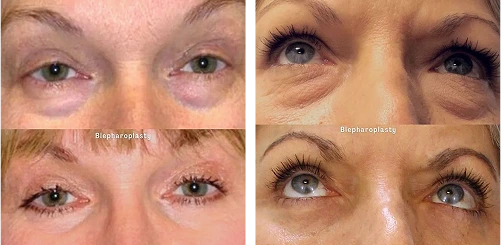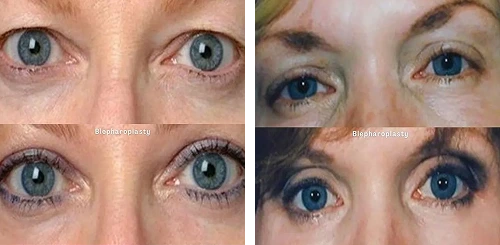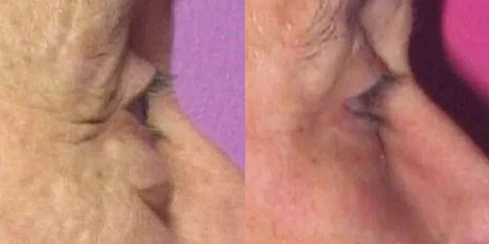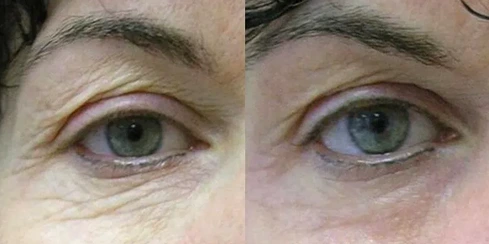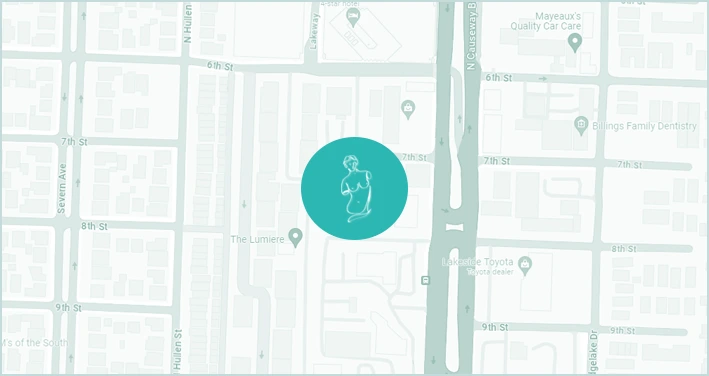Experiencing nerve pain after breast augmentation is a common concern for many patients recovering from surgery. Whether it’s a sharp, shooting pain, a burning sensation, or numbness, discomfort can persist for weeks or even months post-surgery. Fortunately, there are effective ways to relieve nerve pain after breast augmentation and promote a smoother, more comfortable recovery.
Managing post-surgical nerve pain involves a combination of medications, cold therapy, supportive garments, gentle exercises, and lifestyle adjustments. Additionally, understanding why nerve pain occurs and how long it lasts can help you take the right steps toward relief. In this guide, we’ll cover the causes of nerve pain, proven pain management techniques, and expert recommendations to help you heal faster and restore normal sensation in your breasts.
Why Does Nerve Pain Occur After Breast Augmentation?
Nerve pain after breast augmentation occurs because the surgical process affects the delicate nerve pathways in the breast tissue and chest wall. Whether implants are placed above or below the muscle, nerves are inevitably stretched, compressed, or temporarily damaged, leading to tingling, burning, or hypersensitivity.
Several factors contribute to post-augmentation nerve pain:
- Surgical Trauma: Nerves may be disrupted or severed during incision and implant placement.
- Tissue Expansion: The skin, muscles, and nerves must adjust to the new implant size and position, creating pressure and discomfort.
- Nerve Regeneration: As damaged nerve endings heal, they may send erratic signals, causing “pins and needles” or sharp pains.
- Implant Placement Impact: Submuscular implants tend to cause more nerve irritation due to greater tissue disruption compared to subglandular placement.
How Long Does Nerve Pain Last After Breast Augmentation?
Typical Nerve Pain Recovery Timeline:
- First Few Days Post-Surgery: Pain is usually most intense due to swelling, nerve irritation, and inflammation. Patients often describe burning, tingling, or numbness around the breasts and nipples.
- Weeks 1-4: The initial sharp pains start to subside, but intermittent nerve pain, hypersensitivity, or “pins and needles” sensations may still occur.
- Weeks 4-8: The majority of patients notice a significant reduction in nerve pain, although occasional tingling or shooting pains may persist.
- 3-6 Months: By this stage, most nerve pain has resolved as the body adapts and nerves regenerate. However, some patients may still experience mild hypersensitivity or numbness in certain areas.
- Beyond 6 Months: If nerve pain persists past six months, it may indicate prolonged nerve irritation, nerve damage, or scar tissue formation, requiring further evaluation by your surgeon.
Factors That Can Extend Nerve Pain Duration:
- Submuscular implant placement (higher likelihood of nerve stretching)
- Larger implants that cause greater tissue expansion
- Pre-existing nerve sensitivity or conditions like fibromyalgia
- Smoking, poor nutrition, or inadequate post-operative care
Medications for Nerve Pain Relief
1. Prescription Medications for Nerve Pain
For patients experiencing moderate to severe nerve pain, a surgeon may prescribe:
- Gabapentin (Neurontin) or Pregabalin (Lyrica): These medications are commonly used for nerve pain relief and help reduce burning, tingling, or shooting sensations.
- Muscle Relaxers (Cyclobenzaprine, Diazepam): If muscle tightness contributes to pain, these can help reduce spasms and improve comfort.
- Opioid Pain Relievers (Oxycodone, Hydrocodone): In severe cases, short-term opioid use may be prescribed, but these should be used with caution due to the risk of dependency.
2. Over-the-Counter Medications for Nerve Pain
For mild to moderate nerve pain, OTC pain relievers can help reduce inflammation and discomfort:
- Nonsteroidal Anti-Inflammatory Drugs (NSAIDs) like Ibuprofen or Naproxen: These reduce swelling, inflammation, and general post-surgical pain.
- Acetaminophen (Tylenol): A good alternative if NSAIDs cause stomach irritation, acetaminophen helps manage dull, aching pain.
- Topical Analgesics (Lidocaine Patches, Capsaicin Creams): Applying a lidocaine patch or numbing cream to the affected area can temporarily block nerve pain signals.
3. Supplements That Support Nerve Healing
In addition to medications, certain vitamins and supplements can promote nerve regeneration and reduce discomfort:
- Vitamin B12 & B6: Essential for nerve repair and function.
- Alpha-Lipoic Acid: An antioxidant that may help reduce nerve pain and inflammation.
- Magnesium: Can relax muscles and reduce nerve hypersensitivity.
Medication Safety Tips
- Always follow your surgeon’s recommendations regarding dosage and frequency.
- Avoid combining multiple pain relievers without medical guidance.
- Monitor for side effects like drowsiness, nausea, or dependency risks with prescription medications.
Cold Therapy for Nerve Pain Reduction
Using cold therapy is one of the simplest and most effective ways to relieve nerve pain after breast augmentation. Cold therapy helps by numbing the affected area, reducing swelling, and slowing nerve signal transmission, which can ease sharp, shooting pains, tingling, and burning sensations.
1. How Ice Packs Help Reduce Nerve Pain
Cold therapy works by:
- Numbing irritated nerves, providing temporary relief from hypersensitivity.
- Constricting blood vessels, which reduces swelling and inflammation.
- Interrupting nerve signals, which can help diminish pain intensity.
2. Best Cold Therapy Techniques for Nerve Pain Relief
- Ice Packs: Wrap a cold pack in a soft cloth and apply it to the affected breast area for 15-20 minutes at a time.
- Frozen Gel Packs: These mold better to the body and provide consistent cooling.
- Cold Compress Towels: If ice packs feel too intense, a cold, damp towel can offer gentler cooling.
3. How Often to Use Cold Therapy
- Apply every 2-3 hours during the first 72 hours post-surgery.
- Reduce to 3-4 times daily as swelling and pain subside.
- Do not apply ice directly to the skin to prevent frostbite or irritation.
4. When to Avoid Cold Therapy
- If you have poor circulation or hypersensitivity to cold.
- If cold exacerbates your nerve pain rather than relieving it.
Supportive Garments to Alleviate Nerve Pain
Wearing proper supportive garments is essential to relieve nerve pain after breast augmentation, as they help stabilize implants, reduce swelling, and minimize nerve irritation. The right bra can also prevent excessive movement, which may otherwise aggravate stretched or healing nerves.
1. How Supportive Garments Help with Nerve Pain
- Reduce implant shifting, minimizing tension on healing nerves.
- Provide gentle compression, which can decrease swelling and inflammation.
- Improve circulation, aiding in faster nerve regeneration.
- Prevent excessive movement, reducing pulling sensations and hypersensitivity.
2. Best Types of Supportive Garments
- Surgical Bras: Specially designed post-surgery bras provide maximum support and compression, helping to minimize pain and swelling.
- Front-Closure Bras: Easier to wear post-surgery, reducing strain on the chest muscles and nerves.
- Seamless, Wireless Bras: Avoid irritation from seams or underwires that could press on sensitive nerve endings.
- Compression Vests or Wraps: Beneficial for patients experiencing severe swelling or nerve pain.
3. How Long Should You Wear a Supportive Bra?
- First 4-6 Weeks: Required 24/7, except during showering.
- After 6 Weeks: Gradual transition to a soft, wireless sports bra.
- Avoid Underwire Bras for at Least 3 Months to prevent irritation.
4. Choosing the Right Fit
- Ensure snug but comfortable support—a bra that’s too tight may worsen nerve pain.
- Look for breathable, moisture-wicking fabric to prevent irritation.
- Always follow Dr. Metzinger’s post-op garment recommendations for optimal healing.
Relaxation Techniques for Pain Management
Managing nerve pain after breast augmentation isn’t just about medications and physical therapies—relaxation techniques play a crucial role in reducing pain perception, muscle tension, and stress-related inflammation. Since stress can amplify nerve pain, incorporating mind-body relaxation strategies can help regulate the nervous system and promote faster healing.
1. Deep Breathing Exercises
Controlled breathing helps oxygenate the body, relax tense muscles, and decrease pain sensitivity. Try the 4-7-8 technique:
- Inhale deeply through the nose for 4 seconds.
- Hold the breath for 7 seconds.
- Exhale slowly through the mouth for 8 seconds.
- Repeat for 3-5 minutes to activate the body’s relaxation response.
2. Meditation and Mindfulness
Studies show that mindfulness-based stress reduction (MBSR) techniques can help patients manage post-surgical pain more effectively.
- Body Scan Meditation: Focus on releasing tension in the chest and shoulders.
- Guided Imagery: Visualize nerve healing and pain dissipating.
3. Progressive Muscle Relaxation (PMR)
- Tense and relax muscle groups from head to toe, focusing on chest and shoulders.
- Helps ease muscle stiffness and reduce nerve compression pain.
4. Aromatherapy and Herbal Teas
- Essential oils like lavender, chamomile, and peppermint may calm the nervous system.
- Herbal teas with valerian root or passionflower promote relaxation and pain relief.
5. Light Music or ASMR Therapy
- Listening to calming music or ASMR can help distract the brain from nerve pain sensations.
Gentle Exercises to Promote Healing
1. Why Gentle Exercise Helps with Nerve Pain
- Encourages blood flow, helping nourish healing nerves.
- Prevents stiffness in the chest, shoulders, and back, which can contribute to referred nerve pain.
- Reduces muscle tension, minimizing compression on irritated nerves.
- Helps prevent postural imbalances that may arise from compensating for pain.
2. Best Gentle Exercises for Nerve Pain Relief
- Shoulder Rolls: Slowly roll shoulders forward and backward to relieve tension.
- Neck Stretches: Gently tilt the head side to side to ease upper-body tightness.
- Arm Circles: Perform small, controlled circles to improve shoulder mobility.
- Chest Opener Stretch: Clasp hands behind your back and lift slightly to stretch the chest muscles.
- Light Walking: Promotes circulation and reduces inflammation.
3. How Often Should You Exercise?
- Start with 5-10 minutes per day, gradually increasing duration.
- Perform low-impact movements at least twice a day to prevent stiffness.
- Stop immediately if you feel sharp or worsening pain.
4. Exercises to Avoid
- Heavy lifting or resistance training (first 6 weeks).
- Overhead arm movements that could strain the chest muscles.
- High-impact activities like jumping or running.
Gentle exercises work best alongside medications, cold therapy, and relaxation techniques. Next, we’ll discuss nutrition and hydration strategies to support nerve healing.
Nutrition and Hydration for Faster Recovery
1. Best Foods for Nerve Healing
Incorporating anti-inflammatory and nerve-supporting foods can enhance nerve recovery and pain relief:
- Omega-3 Fatty Acids (salmon, walnuts, flaxseeds) – Reduce inflammation and nerve irritation.
- Vitamin B12 & B6 (eggs, dairy, leafy greens) – Essential for nerve regeneration and function.
- Magnesium-Rich Foods (avocados, bananas, dark chocolate) – Help relax muscles and reduce nerve hypersensitivity.
- Antioxidant-Rich Fruits & Vegetables (berries, spinach, bell peppers) – Combat oxidative stress and speed up healing.
2. Hydration for Nerve and Tissue Repair
- Water helps flush toxins, keeps tissues hydrated, and supports optimal nerve function.
- Aim for at least 8-10 glasses per day, especially if taking NSAIDs (which can cause dehydration).
- Herbal teas like chamomile or ginger tea can reduce inflammation and promote relaxation.
3. Foods and Drinks to Avoid
Certain foods can increase inflammation and slow down healing:
- Processed foods & refined sugars – Can exacerbate swelling and prolong nerve pain.
- Excessive caffeine – May increase nerve sensitivity and disrupt sleep.
- Alcohol & nicotine – Impair blood flow and delay nerve regeneration.
4. Supplements That Aid Nerve Recovery
- Alpha-Lipoic Acid – Helps reduce nerve pain and inflammation.
- Turmeric (Curcumin) – A natural anti-inflammatory that may help with pain relief.
- Collagen & Zinc – Support tissue repair and healing.
A nutrient-rich diet is essential for post-surgical recovery and works best when combined with gentle exercise, medications, and supportive garments. Next, we’ll discuss lifestyle adjustments that can help relieve nerve pain after breast augmentation.
Lifestyle Adjustments to Minimize Nerve Pain
Making key lifestyle adjustments can help relieve nerve pain after breast augmentation by reducing inflammation, muscle tension, and nerve irritation. Small changes in daily habits and posture can significantly enhance comfort and speed up healing.
1. Proper Posture and Movement
Maintaining good posture is essential for preventing additional strain on healing nerves.
- Sit and stand upright to avoid hunching forward, which can worsen back and shoulder pain.
- Use pillows for support when sitting or sleeping to maintain spinal alignment.
- Avoid sudden movements that could stretch or irritate nerve endings.
2. Avoid Heavy Lifting and Strenuous Activities
- No lifting over 5-10 lbs for at least 6 weeks to prevent muscle strain and nerve compression.
- Avoid pushing, pulling, or overhead movements that could stress healing tissues.
- When resuming workouts, start with light activity and gradually increase intensity.
3. Quit Smoking and Limit Alcohol
- Smoking restricts blood flow, which can delay nerve regeneration and prolong pain.
- Alcohol can increase inflammation, making nerve pain more intense.
- If quitting is difficult, consult Dr. Metzinger for post-surgical smoking cessation strategies.
4. Optimize Sleep for Healing
Quality sleep helps the body repair nerve damage and reduce post-surgical pain.
- Sleep on your back with an elevated head and shoulders to prevent implant shifting and nerve compression.
- Use a supportive pillow to keep pressure off healing areas.
- Avoid sleeping on your stomach or sides for at least 6 weeks.
5. Manage Stress to Reduce Pain Perception
Chronic stress can worsen nerve pain by increasing cortisol levels and muscle tension.
- Incorporate meditation, deep breathing, or journaling into your daily routine.
- Engage in low-stress activities like listening to music or light reading.
These lifestyle changes, combined with medications, nutrition, and physical therapy, create an optimal recovery environment. Next, we’ll explore alternative therapies that may help relieve nerve pain after breast augmentation.
Alternative Therapies for Nerve Pain Relief
In addition to traditional treatments, alternative therapies can help relieve nerve pain after breast augmentation by reducing inflammation, improving circulation, and promoting nerve regeneration. While not a replacement for medical care, these therapies can complement medications and other pain management techniques.
1. Acupuncture and Nerve Stimulation
- Acupuncture may stimulate nerve healing and reduce pain sensitivity by targeting specific pressure points.
- Some patients benefit from Transcutaneous Electrical Nerve Stimulation (TENS therapy), which delivers mild electrical pulses to block pain signals.
2. Massage Therapy (with Caution)
- Lymphatic drainage massage can reduce swelling and improve circulation, easing nerve discomfort.
- Gentle scar tissue massage (once approved by Dr. Metzinger) may help prevent adhesions that can irritate nerves.
- Avoid deep tissue massage too soon, as it may worsen nerve pain.
3. Heat Therapy for Chronic Nerve Pain
- While cold therapy is best immediately post-surgery, heat therapy can help if nerve pain persists after a few weeks.
- A warm compress or heating pad on the upper back and shoulders can ease muscle tension that may contribute to nerve irritation.
4. Herbal and Natural Remedies
- Turmeric (Curcumin): A natural anti-inflammatory that may help with nerve pain relief.
- Essential Oils (Peppermint, Eucalyptus): Can provide a cooling sensation to ease burning or tingling nerve pain.
5. Yoga and Gentle Stretching
- Modified yoga poses improve flexibility and relieve nerve compression.
- Stick to gentle stretches that avoid overextending the chest muscles.
While these alternative therapies can be helpful, it’s crucial to consult Dr. Metzinger before trying any new treatments. Next, we’ll discuss when to seek medical attention for persistent nerve pain after breast augmentation.
When to Consult a Surgeon for Persistent Nerve Pain
While some nerve pain after breast augmentation is normal, persistent or worsening pain may indicate an underlying issue that requires medical attention. It’s important to monitor your symptoms and recognize when it’s time to consult Dr. Metzinger.
1. Signs You Should Contact Your Surgeon
Seek medical advice if you experience:
- Severe or worsening nerve pain beyond 6 months post-surgery.
- Sharp, electric-shock pain that doesn’t improve with medication.
- Persistent numbness or loss of sensation in the breasts or nipples.
- Burning pain that gets progressively worse, which could indicate nerve entrapment.
- One-sided pain or swelling, which may suggest fluid buildup, implant malposition, or nerve compression.
- Redness, warmth, or discharge at the incision site, as these could indicate infection.
Conclusion: Taking Control of Your Recovery
Recovering from breast augmentation is a journey, and while nerve pain after surgery can be uncomfortable, it is manageable with the right strategies. Understanding how to relieve nerve pain after breast augmentation empowers you to take proactive steps toward a smoother, faster recovery.
By combining medications, cold therapy, supportive garments, gentle exercises, and relaxation techniques, you can effectively manage nerve pain and promote nerve regeneration. Maintaining a nutrient-rich diet, proper hydration, and a healthy lifestyle further supports healing and reduces inflammation. Alternative therapies like acupuncture, massage, and heat therapy may also provide additional relief.
However, if you experience persistent or worsening nerve pain beyond six months, it’s important to consult Dr. Metzinger for further evaluation. Early intervention can prevent long-term complications and ensure that your recovery stays on track.
With patience, proper care, and expert guidance, you can regain comfort, confidence, and full sensation after your breast augmentation. If you have any concerns about your recovery, don’t hesitate to reach out to Aesthetic Surgical Associates for personalized support.


